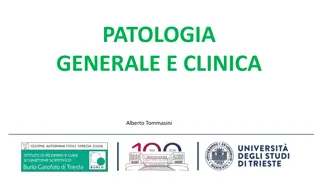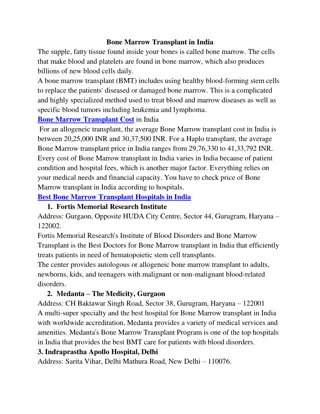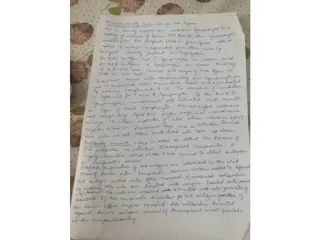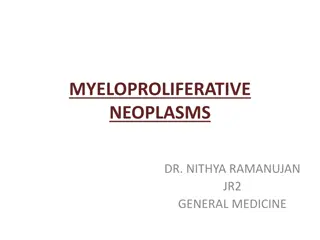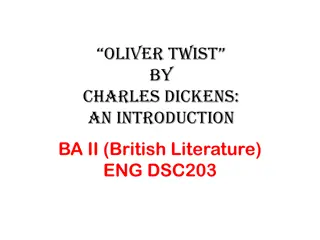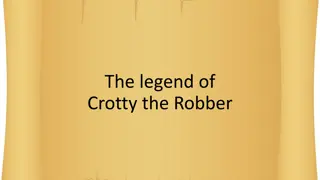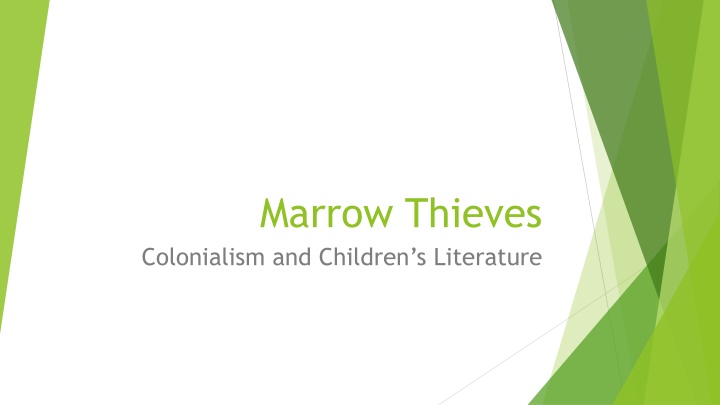
Colonialism, Indigenous Representation, and Canadian Literature
Explore the complex themes of colonialism, Indigenous representation, and cultural stereotypes in Canadian literature. Delve into how children's texts reenact colonial narratives, the mythologization of Indigenous peoples in popular culture, and the challenges of non-Indigenous authors depicting Indigenous characters. Uncover the layers of identity, history, and portrayal that shape our understanding of Indigenous cultures.
Download Presentation

Please find below an Image/Link to download the presentation.
The content on the website is provided AS IS for your information and personal use only. It may not be sold, licensed, or shared on other websites without obtaining consent from the author. If you encounter any issues during the download, it is possible that the publisher has removed the file from their server.
You are allowed to download the files provided on this website for personal or commercial use, subject to the condition that they are used lawfully. All files are the property of their respective owners.
The content on the website is provided AS IS for your information and personal use only. It may not be sold, licensed, or shared on other websites without obtaining consent from the author.
E N D
Presentation Transcript
Marrow Thieves Colonialism and Children s Literature
Colonialism as our shared past Children s texts reinvoke and rehearse colonialism in a variety of ways: 1. Through narratives that engage with history in realistic or fantastic modes 2. Through sequences involving encounters between Indigenous and non-Indigenous characters 3. Through representations of characters of mixed ancestry 4. Through metaphorical and symbolic treatments of colonization
The Imaginary Indian vs Own Voices Daniel Francis s study: The Indian began as a White man s mistake, and became a White man s fantasy. Through the prism of White hopes, fears and prejudices, indigenous Americans would be seen to have lost contact with reality and to have become Indians ; that is, anything non-Natives wanted them to be
The Representation of the Indigene Goldie: Non-Indigenous Canadians look at an Indigenous Canadian and see someone who is Other and therefore alien to themselves. But the Indigenous is indigenous and cannot be alien. So the non-Indigenous Canadian must be alien. But how can the Canadian be alien within Canada? One: non-Indigenous culture attempts to incorporate the Other, superficially through appropriation of Indigenous dress, jewellery, or names like Oneida Camp or Pontiac car. Two: through fiction. However, the Aboriginal Canadian character constructed by these non-Native writers has become in literary circles a part of the Canadian imagination, rather than a representation of a contemporary or even a plausible historical Aboriginal. Instead, the literary Aboriginal is the sort of wise person who might persuade a non-Aboriginal Canadian to look to the First Nations for personal role models
Indian image mythologized by popular Canadian culture since 1850, propagating stereotypes that exist to this day: paintings and photographs of the 19th century to the Mounted Police sagas and the spectacle of Buffalo Bill's Wild West Show; from the performances of Pauline Johnson, Grey Owl, and Buffalo Long Lance to the media images of Oka and the Vancouver Winter Olympics Contradictory stories non-Natives tell about Imaginary Indians are really stories about themselves and the uncertainties that make up their cultural heritage
Most representations of Indigenous peoples and cultures in Canada produced by non-Indigenous writers and artists Access to publishing houses has always favored English (or French) Many non-Indigenous representations of Indigenous people recycle stereotypes Some of these may seem to be positive, such as the image of the Indigenous sage-figure who appears in many children's texts, but such representations are often ahistorical and apolitical and merely reinforce the impression that Indigenous people belong to a mythic past rather than being citizens of complex, contemporary societies
Equating body with land British empire: Indigenous bodies have to be colonized the same way the land must be controlled and civilized Indigenous bodies themselves described as the land primitive, savage, dark, forbidding, strong, dangerous, threatening they are both the forest and the wolf in that forest that Europeans fear Contemporary essentialist racism: Pocahontas
Early English Canadian lit and Indigenous people Figures such as Tecumseh, who played a crucial role in the successful routing of the Americans in the War of 1812, were celebrated in the children s history texts of Henry H. Miles and T.G. Marquis, and an awareness of the oral traditions of Canada s various tribes began to develop, albeit slowly 1896: family magazine Our Home published a series of Micmac legends, adapted from the collections compiled by Silas T. Rand
French Canadian and Indian staple of stories set in Canada (ambiguous - friends/foes of English-speaking Canada) Need to tame and control central to the progress of imperialism Said: For the European of the late nineteenth century, an interesting range of options are offered, all premised upon the subordination and victimization of the native. One is a self-forgetting delight in the use of power the power to observe, rule, hold, and profit from distant territories and people. . . . Another is an ideological rationale for reducing, then reconstituting the native as someone to be ruled and managed. . . . Third is the idea of Western salvation and redemption through its civilizing mission
Stories as rebellion Writing against discovery narratives Not just writing a positivist history of the oppressed, but changing how the story itself is told (form and structure) Different storytelling tradition: flexibly constructed stories, applying spatial, temporal (as well as structural) strategies inherent in traditional storytelling Foregrounds the opposition between oral and written authority, undermining the latter but yet inscribing the oral within textuality (hybrid)
The Truth About Stories Thomas King: It would be reasonable to expect Native writers to want to revisit and reconstruct the literary and historical past, but with few exceptions contemporary Native writers have shown little interest in using the past as setting, preferring instead to place their fictions in the present. What Native writers discovered, I believe, was that the North American past, the one that had been created in novels and histories, the one that had been heard on radio and seen on theatre screens and on television, the one that had been part of every school curriculum for the last two hundred years, that past was unusable, for it had not only trapped Native people in a time warp, it also insisted that our past was all we had
How does the non-chronological order affect the reader? How does intergenerational trauma play into the novel? Who are other marginalized groups depicted in this novel? What s the significance of language?

